Nagano Prefecture is mostly mountains and forests, about 80% of it. The seasons are very distinct here—spring, summer, autumn, and winter are clearly felt. Even though it’s not by the sea, the region is full of nature, including huge mountains that go up to 3,000 meters high.
Winter brings a lot of snow, and when it melts in spring and summer, it becomes clear and cold river water. This water is so chilly that even in summer, you can’t keep your feet in it for long. It’s home to fish like char and trout, and the water from these rivers is used to irrigate rice paddies and fields. Some places treat this water with a bit of chlorine to make it tap water, which everyone uses at home.
Nagano also benefits from ample sunshine, clean air, and a noticeable temperature gap between day and night. It’s common to need long sleeves even in summer evenings because of this difference. When I was young, temperatures rarely went above 30°C during summer. By mid-August, a refreshing breeze starts blowing, and you often see red dragonflies, which are a sign of autumn approaching.
The abundant natural environment is perfect for farming, yet winter scarcity has led to a tradition of stockpiling food, a practice that remains alive and well on our dinner tables today.
Different food cultures in different regions
In Nagano, the geographical layout and historical divisions during the Edo period led to distinct food cultures within different regions. These divisions made travel from east to west and north to south challenging, resulting in each area developing its unique culinary traditions. As a result, even within Nagano Prefecture, the flavors and customs of food vary depending on the locality.
Some of Nagano’s renowned dishes are Shinshu Soba, Oyaki, and Shinshu Miso, but the methods of preparation and consumption differ across regions, therefore, the tastes are different, too. Below is a list of typical foods by area. While some ingredients are specific to Nagano Prefecture, I prepare recipes with ingredients that are more widely available, so feel free to try making them at home.
Nagano’s Famous Food
Oyaki
Oyaki, a beloved local snack from Nagano, has been a culinary staple for a long time and continues to be part of daily food today. It is a type of dumplings, and most of them are made with vegetable fillings. Renowned throughout Japan as a signature food of Nagano, Oyaki originated in the mountainous areas where rice was scarce. Traditionally, it was prepared as “Haiyaki Oyaki,” cooked in the hearth’s ashes. Over time, this method evolved into steaming or pan-frying. Each family has its unique recipe for fillings, with no strict rules for preparation. Therefore Oyaki is not only a delicious and comforting dish but also a testament to the rich culinary heritage of Nagano, where tradition and creativity blend seamlessly in every bite.
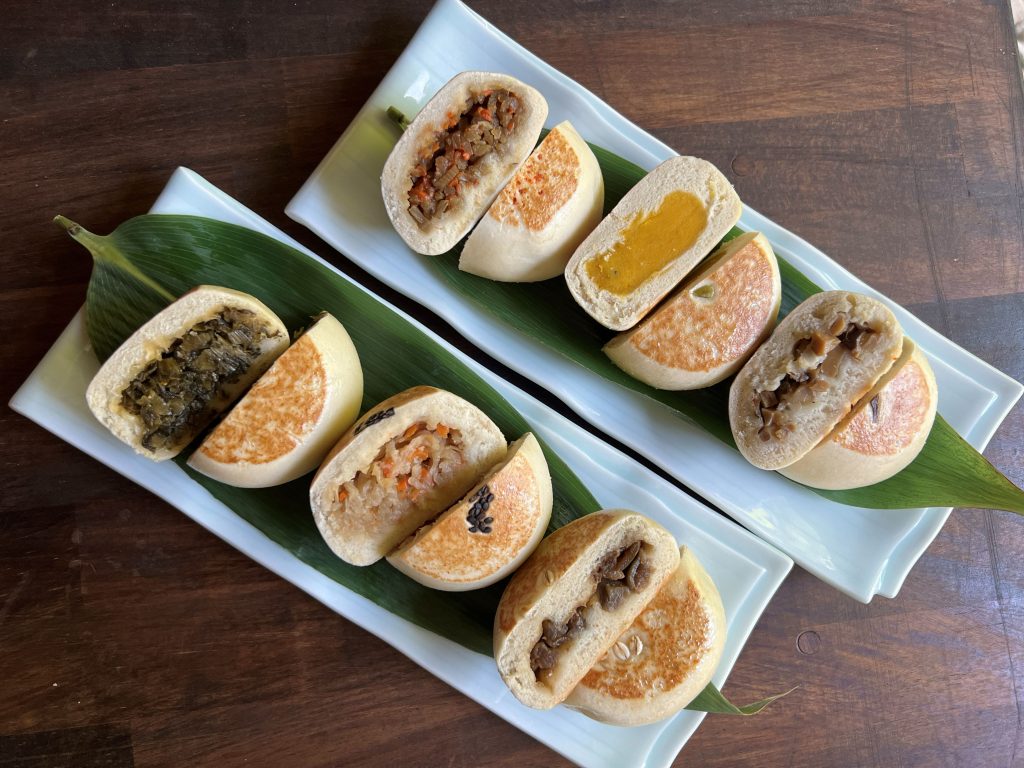
Soba
Shinshu Soba (Shinshu is another name for Nagano) one of Nagano’s most iconic dishes, enjoys widespread popularity throughout Japan. The region’s climate is particularly well-suited for growing high-quality buckwheat, which results in exceptional Soba noodles. While Soba can be found across Nagano Prefecture, the preparation and consumption methods vary from region to region. This regional diversity is part of the charm of Shinshu Soba, allowing people to experience and enjoy it in uniquely local ways, reflecting the rich culinary heritage and creativity of Nagano.

Shinshu Miso
Shinshu Miso is one of the most popular condiments in Japanese cuisine, and Nagano Prefecture is its largest producer. This Miso is known for its distinct Rice Miso, made from rice malt and soybeans. It is typically described as “dry” Miso, with a golden-yellow color and a salt concentration of around 12%. With a rich history dating back to fermentation techniques introduced from China, Shinshu Miso has become a staple in Japanese kitchens. Today, about 50% of all Miso consumed in Japan is Shinshu Miso, so chances are you’ve already enjoyed its unique flavor in many dishes.
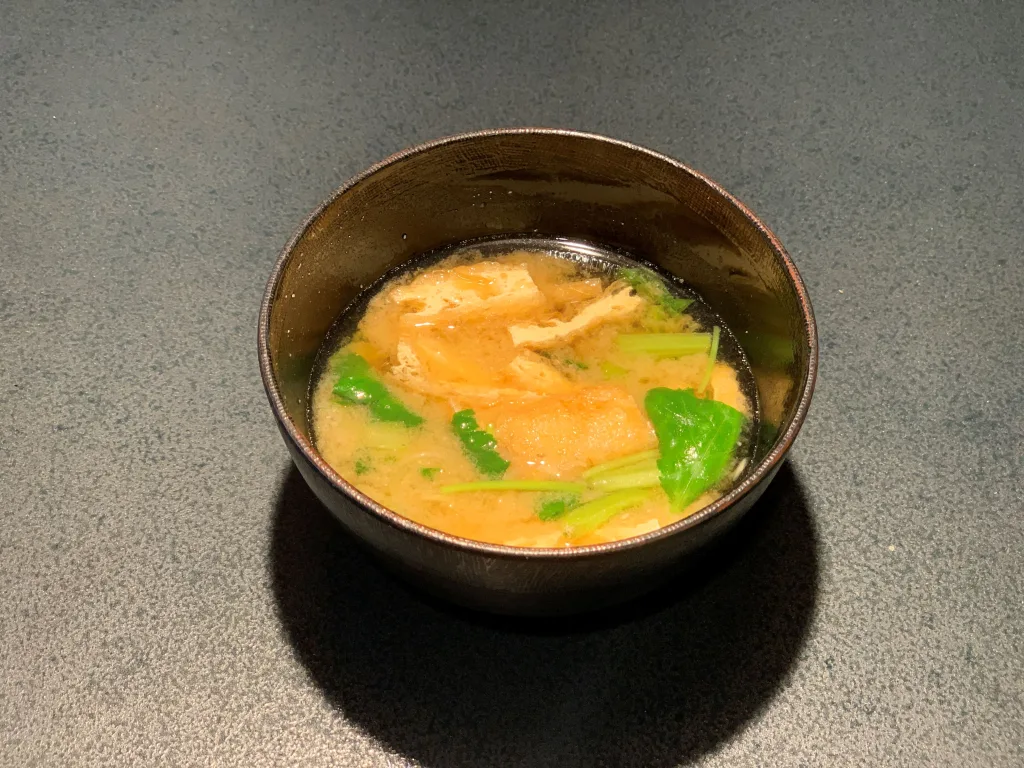
Nozawana Pickles
Nozawana Pickles, created about 200 years ago, are a symbol of Nagano, often chosen as souvenir. The name Nozawana comes from the village of Nozawa Onsen where they were first made. These pickles are culturally unique in their preparation. The entire community gathers to wash large quantities of Nozawana in an event called ‘Ona-arai,’ before placing them in large wooden barrels to pickle. This process is a communal effort, with neighbors helping each other and sharing the pickles they produce. In winter, delicious Nozawana Pickles grace dining tables, their flavor evolving quickly as they soak.
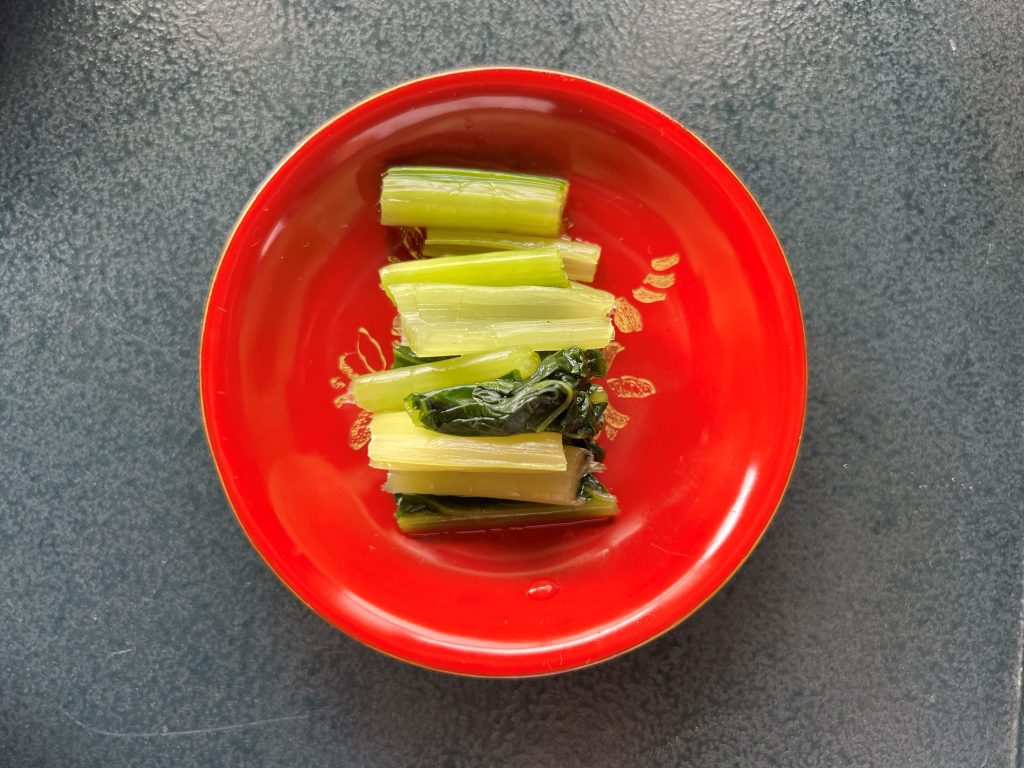
Shinshu Salmon
Shinshu Salmon is a type of trout raised exclusively in Nagano, where the rivers are fed by the pure spring water from the Northern Alps. It has a rich and thick flavor, yet it’s lighter on the palate compared to regular salmon. Shinshu salmon is a relatively new ingredient, introduced just a few years ago, but it has quickly become a symbol of the delicious river fish grown in Nagano’s pristine natural environment. You can now find it on the menu in many restaurants throughout the prefecture.
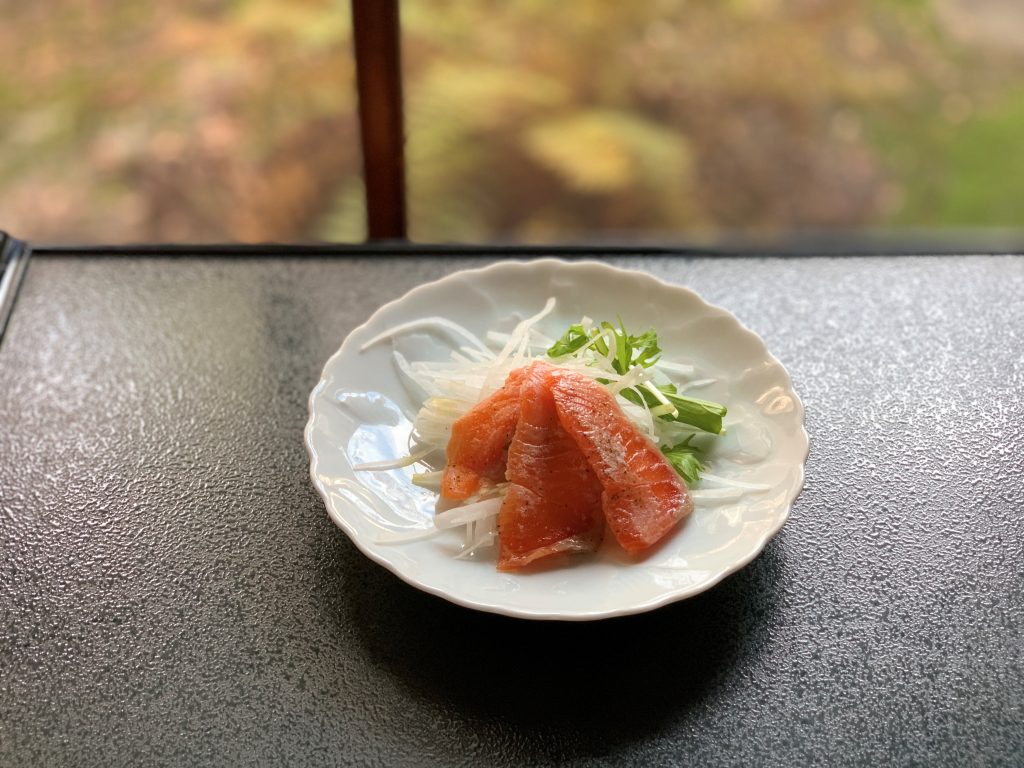
Northern area
Oshibori Udon
Oshibori Udon is a local Udon noodle with freshly grated spicy Daikon radish juice mixed with Miso and various condiments to create a dipping sauce for freshly boiled Udon noodles. The name ‘Oshibori‘ comes from the “squeezing” the grated radish to get the juice. The Daikon radish used, Nezumi Daikon, is known for its deep flavor that combines pungent spiciness with a hint of sweetness. Typically, Miso, which has long been used as a dipping sauce for both Udon and Soba noodles, green onions and bonito flakes are added to enhance the taste.
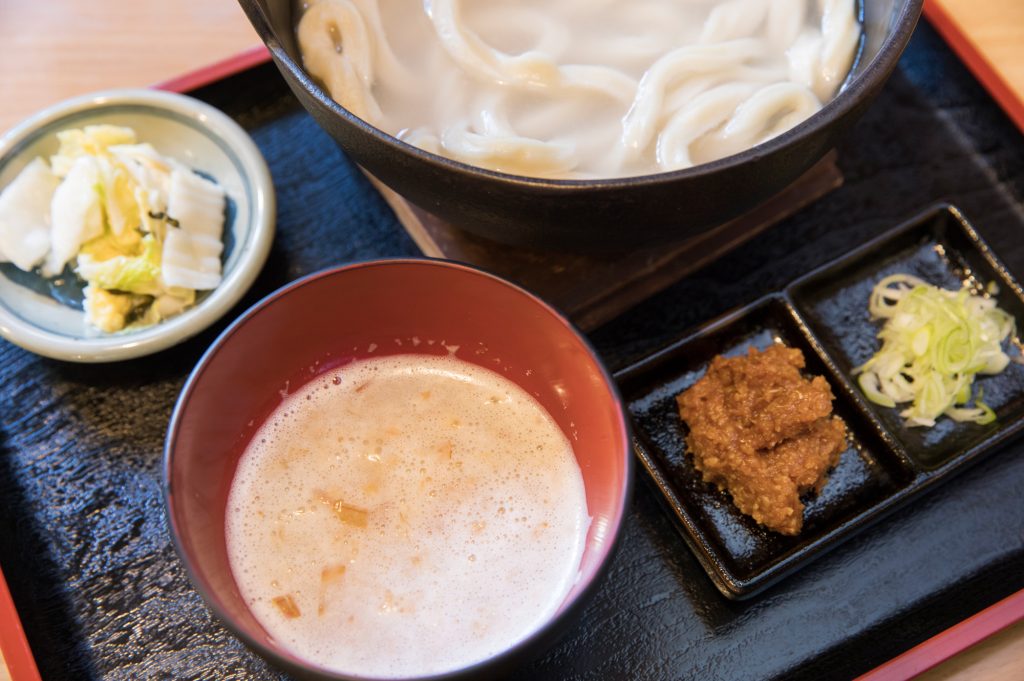
Sauce:Ministry of Agriculture, Forestry and Fisheries website https://www.maff.go.jp/j/keikaku/syokubunka/k_ryouri/search_menu/menu/oshibori_udon_nagano.html
Ego
Ego is a type of seaweed that has been delivered from Niigata for a very long time. In Nagano, where there is no coastline, this seaweed was considered a valuable source of minerals. As a result, it was traditionally prepared for festive occasions. Typically, Ego is dried for transportation and rehydrated for cooking. It dissolves when heated in water. Once cooled to room temperature, it forms a jelly-like consistency.
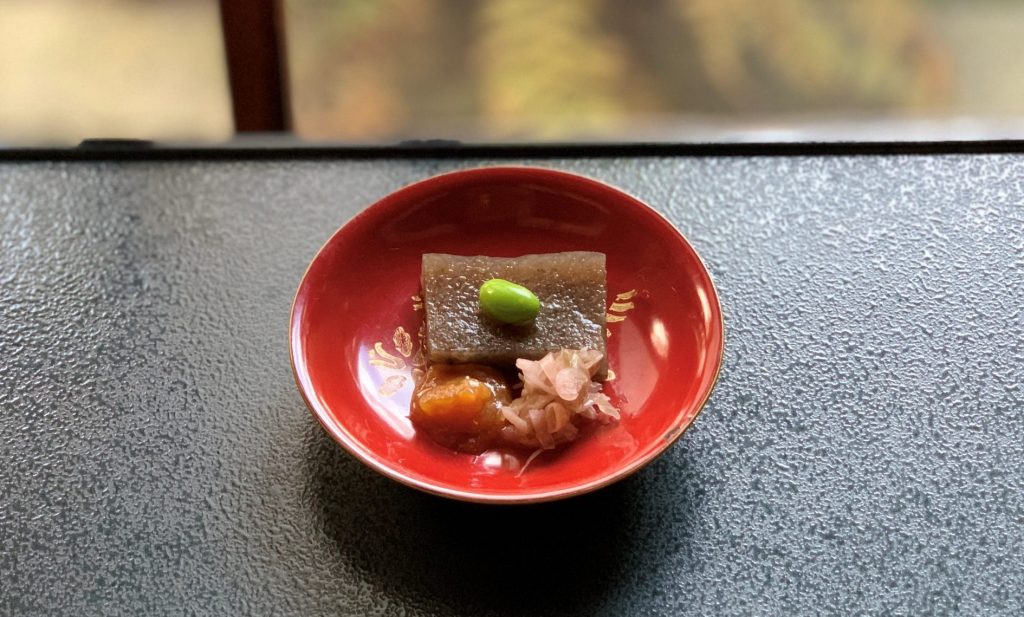
Yatara
Yatara is a summer dish made from a mixture of finely chopped vegetables and pickles. It includes summer vegetables such as Myoga (Japanese ginger) and eggplants, along with Botan Kosho (Japanese green hot pepper) and miso-pickled Daikon radish, served over warm rice. Botan Kosho is recognized as a traditional vegetable in Nagano. Yatara, rich in summer vegetables, has been a favorite since my childhood when I enjoyed it with non-spicy vegetables over freshly cooked rice. As it is prepared with freshly harvested vegetables, Yatara is highly nutritious. The potassium in summer vegetables helps cool the body and prevent summer fatigue. Yatara pairs well not only with rice but also with noodles and cold tofu. By the way, Yatara means that “you cannot resist it because it is so delicious!” So, would you like to try it? Check out the recipe now!!
Hitasi Mame
Hitashi Mame is a simple dish of boiled green soybeans in a light soy sauce-based broth. The beans have a unique flavor reminiscent of seaweed and a crunchy texture that complements the broth beautifully. These flavorful beans are boiled and lightly seasoned to perfection. Enjoying this simple dish is one of my summer pleasures, signaling the start of the season.
Center Area
Sanzoku-yaki Fried Chicken
Sanzoku-yaki is a beloved dish in the Matsumoto area, consisting of deep-fried chicken thighs or breasts marinated in garlic, ginger, and soy sauce. Unlike typical Karaage, Japanese fried chicken, which is cut into bite-sized pieces, Sanzoku-yaki is made from a large slice of meat, deep-fried in chunks. The use of potato starch for coating differentiates it from Karaage. Sanzoku-yaki is a bold and hearty dish which goes well with freshly cooked rice.
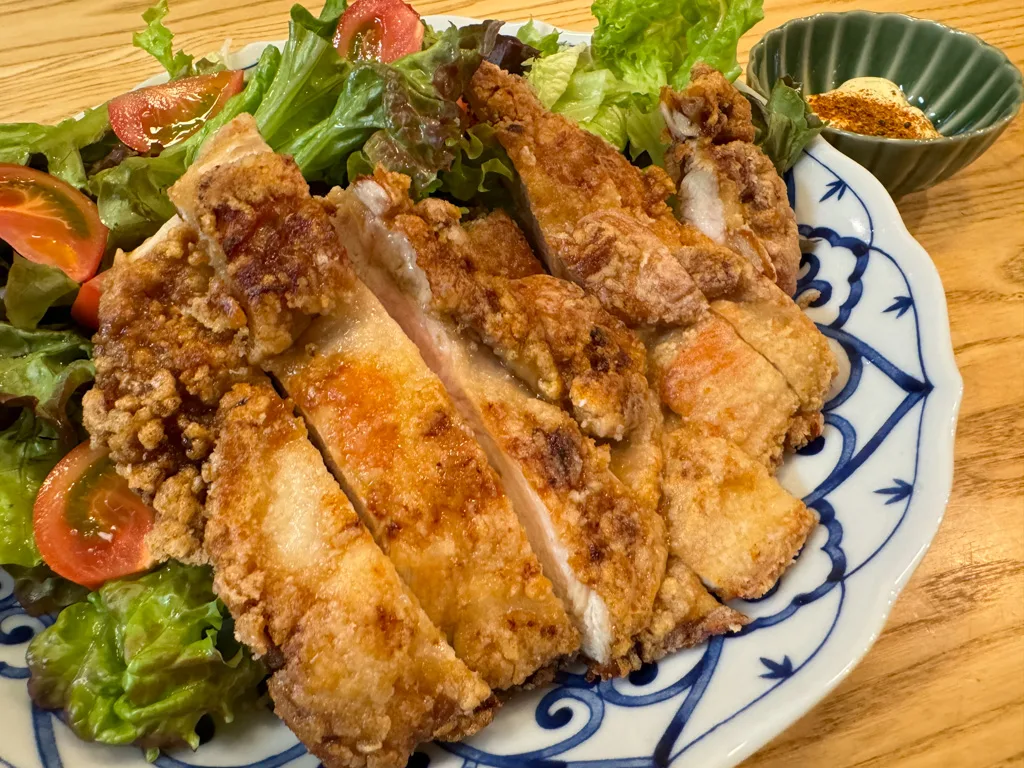
Squid Sunomono
Sunomono refers to vinegar-pickled dishes, and Squid Sunomono is made with salted squid, cucumber, and Wakame seaweed, often enjoyed in the summer. Given Nagano’s distance from the sea, seafood was historically transported along the “Salt Road.” Salted whole squid, created by pickling boiled squid in salt, is a classic example, originating as a by-product of the salt trade. Even when desalinated, the squid retains a moderate saltiness, aiding in salt intake and helping to prevent heat stroke during summer.
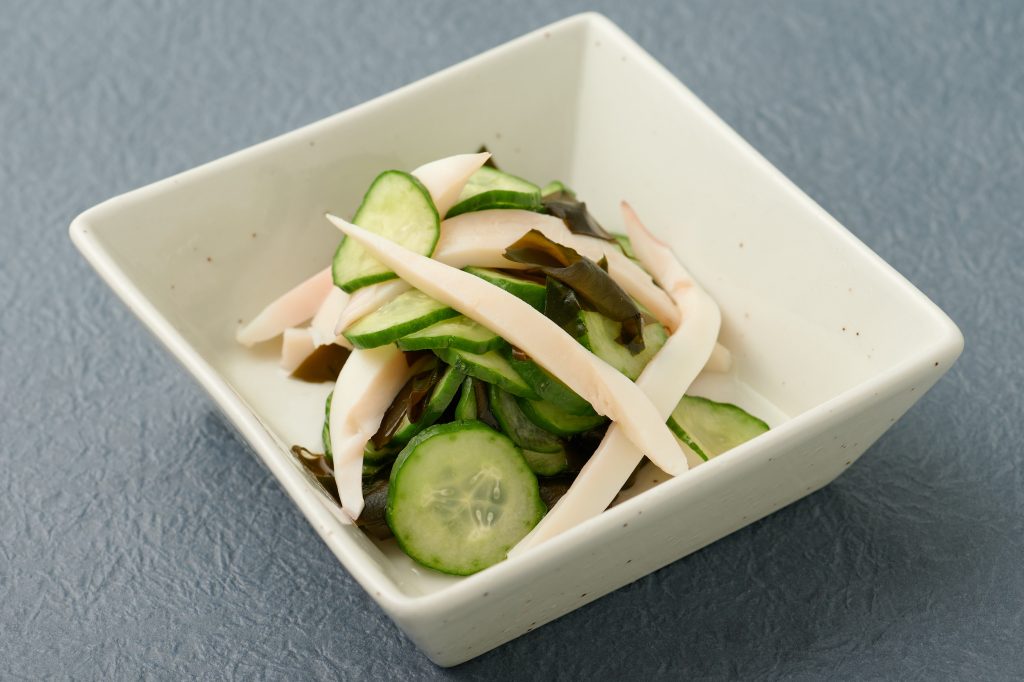
Sauce:Ministry of Agriculture, Forestry and Fisheries website
https://www.maff.go.jp/j/keikaku/syokubunka/k_ryouri/search_menu/menu/sioika_no_sunomono_nagano.html
Takenoko (bamboo shoot) miso soup
Takenoko Miso soup features bamboo shoots harvested in early summer (May-June) in mountainous areas. These rare bamboo shoots, unique to Nagano with its heavy snowfall, are prized for their taste with little acridity. Canned mackerel is a crucial ingredient, adding richness and oil to the light Miso soup. Canned mackerel, which became popular around 70 years ago, was especially valuable in sea-less Nagano. During bamboo shoot season, local supermarkets stock up on canned mackerel!
Southern Area
Sauce Katsu-don
Katsu-don is one of the most popular Japanese dishes. Typically, it is served with egg and rice, but in Nagano, the most popular version is Sauce Katsu-don. In this variation, shredded cabbage is placed on top of rice, and cutlets dipped in sauce are served over the cabbage. Having eaten the Sauce Katsu-don for as long as I can remember, I always assumed this was the standard way to enjoy Katsu-don in Nagano. In fact, I was unaware of the egg-topped version’s existence! The sauce used for this dish is generally store-bought, but it can also be made at home.
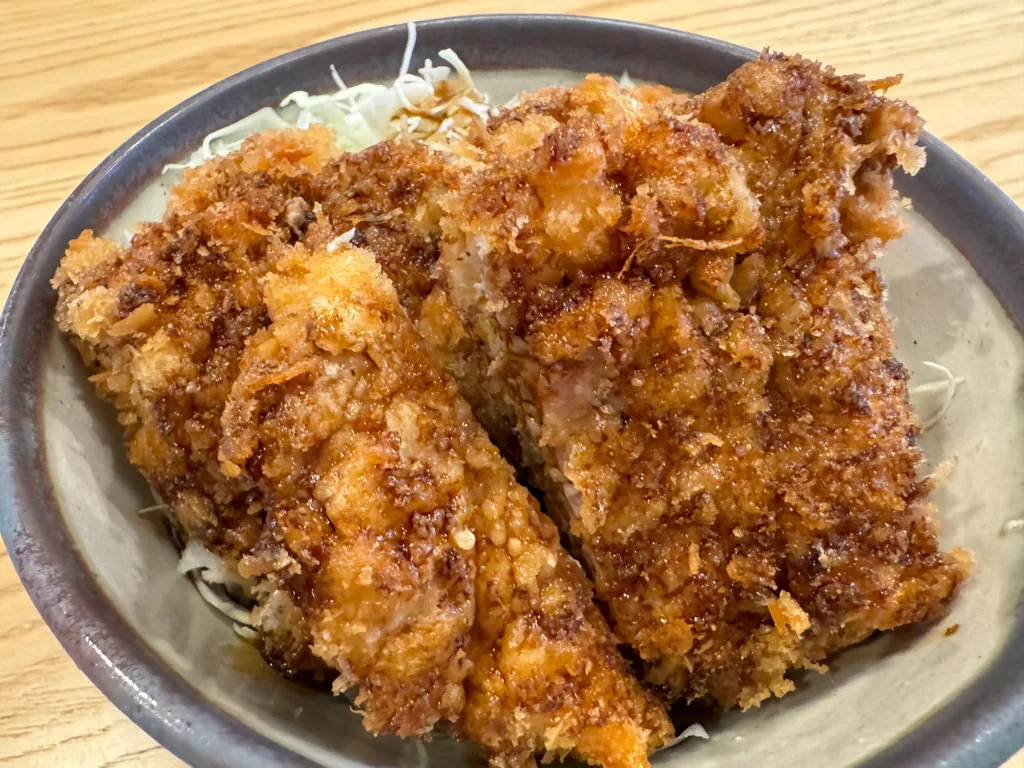
Gohei Mochi
Gohei-mochi is a traditional Japanese snack made by skewering Uruchi rice and grilling it with a sweet miso or soy sauce-based sauce. Originating from the mountainous regions of Honshu, it has been a popular delicacy since the Edo period (1603-1868) and continues to be enjoyed in Nagano. Gohei-mochi comes in various shapes, including Waraji (straw sandals) shaped, Koban (oval) shaped, tubular, and round shaped. In fact, there are said to be about 10 different types! The sauces (Tare) used to flavor Gohei-mochi are diverse, sometimes featuring sweet soy sauce or miso, and other times incorporating ingredients like sesame, Sansho (Japanese pepper), Yuzu (citrus fruit), or walnuts.